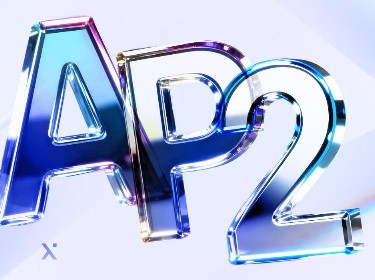For years, individuals and organizations alike have been searching for effective ways to reduce our carbon footprint. Tokenizing carbon credits has emerged as one of the many promising solutions because it provides a financial incentive for people’s active participation.
Carbon credits are a tool that measures how much carbon dioxide and other greenhouse gasses are removed from the atmosphere or never released. Governments set limits on emissions, and companies can buy, sell, or trade ‘permits’ in the form of carbon credits. These credits give them the right to emit a certain amount of greenhouse gas. It’s in effect a marketplace for sustainability, where companies work together to reduce their emissions.
At the same time, today’s standard carbon credit market is complex and prone to scams. This helps explain why carbon credit tokenization has appeared on the scene. The advent of this phenomenon has opened up exciting possibilities for streamlining the carbon credit market, making it fairer and more transparent and enhancing its effectiveness in combating climate change.
Let’s find out what it is like to tokenize carbon credits, how the process works, what it brings to the market, and how to launch your own carbon credit tokenization project.
What is carbon credit tokenization?
Carbon credit tokenization is the process of creating digital tokens representing real carbon credits with the help of blockchain technology. These credits can be bought, sold, and traded like any other digital assets.
This is how the process of tokenizing carbon credits goes:
- It begins with verifying and quantifying the carbon reduction or avoidance achieved by a particular project or activity
- The verified data is then recorded on a blockchain
- Once the information is stored in the blockchain, it becomes immutable, meaning that no one can alter or remove this data; it will stay there forever and remain transparent to others.
Smart contracts, as they run on the blockchain, automate the issuance and transfer of the carbon credit-backed tokens, making the transactions more efficient and reliable.
Participants in the carbon credit market can purchase these tokens and use them to offset their emissions or trade them on decentralized exchanges. This democratizes access to the carbon market, enabling a broader range of stakeholders to engage in sustainable practices and to contribute to the global effort of mitigating climate change.
As a seasoned expert in the blockchain domain, we are here to help you develop secure, reliable, and bug-free smart contracts for your project
Brief overview of the carbon market: the state and challenges
![]()
The first international carbon markets were established through the implementation of the Kyoto Protocol in 1997. This became international law in 2005 and by 2013 it had gained 192 signatories. However, in 2015 it was largely superseded by the Paris Climate Agreement.
These days, carbon credits are sold within two types of markets: compliance and voluntary. The former is mandatory, operating under government regulations. In this market, governments set limits or caps on emissions for specific industries. Companies are then required to hold a sufficient number of carbon credits to match their emissions.
Currently, there are 30 carbon markets focused on “compliance” worldwide, where organizations are obliged to acquire or exchange allowances for the emissions they generate. These markets have collectively attained a value surpassing $850 billion (2021) and encompass approximately 20% of the world’s total greenhouse gas emissions.
The voluntary market, meanwhile, is optional and driven by voluntary actions from organizations and individuals, who purchase carbon credits to offset their emissions and demonstrate their commitment to sustainability. These credits are typically used to finance projects that reduce or remove greenhouse gas emissions, such as those involving renewable energy.
The voluntary carbon credit market’s value reached $2 billion in 2021, and it is expected to hit $50 billion in 2030, according to McKinsey & Company. It has also been estimated that in 2020 buyers retired carbon credits for 95 million tons of carbon-dioxide equivalent (MtCO2e). So, despite their voluntary nature, it is evidently still growing and successfully developing.
At the same time, these traditional carbon credit markets are currently facing a number of challenges, such as:
- Insufficient pricing
- Limited scope and coverage
- Complex monitoring and verification
- Market volatility
These challenges hinder the effectiveness of these markets when it comes to incentivizing emission reductions. Innovative solutions such as carbon credit tokenization and the exploration of new market mechanisms are being pursued to find a way forward and to boost the efficiency of carbon credit markets.
What can carbon tokens bring to the carbon market?
Carbon credit tokenization offers a multitude of benefits for the carbon market: it allows for increased accessibility, fractionalization, higher efficiency, improved liquidity, and better price discovery.
These advantages not only address existing challenges in the carbon market but also open up new opportunities for broader participation, streamlined transactions, and enhanced market dynamics. Let’s explore these benefits in greater detail.
Increased accessibility
Tokenization has far fewer barriers for entry than traditional markets because carbon credits can be accessed, sold, and traded globally through digital platforms that people can join from anywhere, regardless of their geographic location.
What’s more, while traditional carbon credit markets are mostly created for large corporations, tokenization, for its part, democratizes access by allowing individuals to participate in the carbon market and offset their personal carbon footprint. This empowers individuals to take action against climate change, contributing to our collective efforts to reduce greenhouse gas emissions.
Fractionalization
In the traditional carbon credit system, each carbon credit represents the reduction or removal of one ton of carbon dioxide emissions. However, with tokenization it becomes possible to split the credits into smaller units — in other words, into fractions. This means that instead of purchasing an entire carbon credit, you can choose to acquire only a fraction of a token.
This feature enables individuals with limited financial resources to join in and engage in carbon offsetting. It means the market is opened up to a wider range of participants, whether they are individuals, small businesses or other investors who would not have had the means to invest in whole carbon credits.
An STO development company can help facilitate this fractionalization process by creating secure, compliant tokenized offerings. Their expertise ensures that fractional carbon credits are seamlessly integrated into blockchain platforms, making them accessible to a broader audience while maintaining regulatory standards.
Learn more about Obito — a platform that can tokenize any type of real-world asset, developed by PixelPlex
Improved efficiency and liquidity
Tokenization of carbon credits brings both efficiency and liquidity to the carbon market.
Firstly, tokenization enhances efficiency by streamlining processes and reducing administrative complexities. By using blockchain, the entire lifecycle of carbon credits, including their creation, issuance, and transactions, can be recorded and verified in a transparent and immutable manner and in a single place. This eliminates the need for third-party services and manual paperwork, reducing time costs and administrative burdens.
Secondly, carbon credit-backed tokens can be easily traded on decentralized exchanges and other blockchain-based platforms, including those developed by a DeFi lending platform development company. This enables peer-to-peer transactions and thereby reduces costs associated with intermediaries. What’s more, fractional ownership enhances market liquidity and flexibility.
Better price discovery
Carbon credit tokenization facilitates better price discovery by providing transparent market data, increasing market participation, and contributing to fairer competition.
Transparency is achieved through through the integration of enterprise blockchain development services, which enables the open recording of transactions and as a result provides access to real-time information on carbon credit trades. Participants can then make more informed decisions and assess market conditions with greater accuracy.
Tokenization also expands market participation, attracting a diverse range of buyers and sellers. The competition among participants influences prices based on factors such as carbon credit availability, project quality, and market demand, ultimately contributing to improved price discovery within the carbon market.
What are the common concerns about crypto carbon credits?
The two main concerns related to the tokenization of carbon credits are so-called zombie credits and the potential environmental impact of blockchain technology. Let’s take a closer look at each of these issues.
Zombie credits
The term “zombie project” existed even before the emergence of crypto carbon credits. It refers to projects that in recent years have had little or no demand at all for their credits. However, now they are being revived through the use of tokens.
Analysis by CarbonPlan, a nonprofit public benefit corporation, revealed that about 28% of credits bridged by the popular Toucan protocol came from such zombie projects. Those credits represented 6 million tons of CO₂-equivalent. For example, there was a natural gas project and a hydropower project in China, where Toucan transactions have led to the retirement of credits that had been dormant for a significant period of time.
While there is nothing intrinsically bad about retiring old carbon credits, the problem is that those credits may have failed to attract buyers in the voluntary carbon market due to potential quality issues. Consequently, some critics question the effectiveness of crypto carbon credits in achieving climate goals in the voluntary carbon market.
Blockchain’s environmental impact
Blockchain technology and its potentially negative environmental impact have been much discussed for some years.
It is true that some blockchains, especially those based on the Proof of Work (PoW) consensus mechanism, such as Bitcoin, consume excessive amounts of energy. This is because the process of validating transactions involves crypto mining, which requires high computational power. To be more specific, Bitcoin uses 143.86 TWh of electricity per year, which is equivalent to the annual energy consumption of a country like Norway.
At the same time, though, many more sustainable alternatives have already been developed. Blockchains based on the Proof of Stake (PoS) algorithm are among the most energy efficient.
In a PoS blockchain, validators are selected to create new blocks based on their “stake” of coins or tokens. This makes PoS blockchains such as Ethereum (which moved to PoS in 2022), Polygon, and Cardano more energy-efficient than PoW-based systems since they don’t involve energy-intensive mining activities. With PoS, the energy consumption is significantly reduced, making it a greener alternative for carbon credit tokenization.
Introduce yourself to HELO — a sustainable and high-performing blockchain platform powered by a unique Proof of Ethic consensus mechanism
How do crypto carbon credit platforms work?
![]()
Crypto carbon credit platforms operate as digital marketplaces where carbon credits are tokenized and traded using blockchain technology.
The process typically begins with the issuance of carbon credits. Verified carbon offset projects, such as renewable energy projects or reforestation initiatives, generate these credits by reducing or removing greenhouse gas emissions. These credits are then digitized and issued as tokens on a blockchain.
On the platform, buyers and sellers can interact directly, a process facilitated by smart contracts. Transactions are consequently seamless and secure, cutting the need for intermediaries. Buyers interested in purchasing carbon credits can browse available tokens, assess their environmental impact, and verify their validity through the blockchain’s transparent ledger.
Once a buyer identifies suitable credits, they can initiate a transaction by submitting payment. The smart contract ensures the transfer of tokens to the buyer once the payment has been successfully completed.
Sellers, for their part, can list their carbon credits on the platform, providing detailed information about the project and the emissions reductions associated with it. They can set a price for their credits and await potential buyers.
Tokenization platforms also facilitate the verification process, ensuring the legitimacy of carbon credits. Independent third-party verifiers play a crucial role in assessing and validating the emissions reductions achieved by the project. The verification data is securely recorded on the blockchain, establishing a transparent and auditable record.
How to launch a carbon credit tokenization project: a step-by-step guide
Drawing upon our extensive experience in working on blockchain-powered environmental projects, we have curated a list of key considerations and practical strategies to guide you in launching your project, including the development of your very own carbon credit tokenization platform.
![]()
Step 1. Decide where your carbon credits will come from
Here are two possible scenarios. If you own an eco-friendly company that actively reduces carbon emissions, you have the opportunity to generate your own carbon credits. In this case, you can tokenize and sell the carbon credits you’ve earned through your platform, showcasing your commitment to sustainability and providing others with the chance to support your environmental efforts.
In the other scenario, you want to create a marketplace that serves as an aggregator for various carbon credit projects. Your platform will facilitate the tokenization and trading of carbon credits from different initiatives, providing a centralized hub for carbon credit transactions.
All in all, you will need to decide where the carbon credits that you are going to tokenize will come from.
Step 2. Think about how the carbon credits will appear on your platform
If your company intends to generate and sell its own tokenized credits, you must develop a comprehensive plan outlining how your carbon credits will be generated and how the data will be described and transferred to the platform. Additionally, you need to consider which certification authority will verify your carbon credits before they are listed on the website, as well as which standard will be used for accreditation.
If your goal is to establish an aggregator platform, it is vital to carefully consider your project partnership strategy. This involves identifying and partnering with promising and really impactful projects.
Rather than creating a large-scale platform right away, it is advisable to start small by focusing on a single country and a few projects. This approach will allow you to test the viability and success of the platform before expanding it further.
Step 3. Develop a business model for generating revenue
While making a positive impact is definitely important, it is crucial for any business to generate revenue. When considering your project’s income generation, explore various possibilities:
- Will it rely on transaction, listing, or subscription fees?
- Will you offer verification and certification services?
- Will it be possible to earn commissions from partner projects for each carbon credit generated?
- Can your team provide consulting services?
A carbon tokenization platform has many avenues for generating income, and these approaches can also be combined.
Have you ever heard of the recycle-to-earn concept? It was released in this multicomponent recycling network called Circularr
Step 4. Create a carbon credit tokenization strategy
Think about the timing — when the credit will get tokenized. Should it occur before the purchase or should it get automatically tokenized at the moment when carbon credits are acquired?
Next, select a blockchain platform. At present, the most popular options include Ethereum and Polygon. Notably, Polygon strives to be carbon neutral and aims to spearhead the web3 ecosystem’s journey towards carbon negativity.
Additionally, determine the token standard: will it be an ERC-20 token or an NFT? Also, contemplate how exactly these credits will be purchased and what currency will be used — fiat or crypto. Decide also which specific currencies will be involved. Turn to a trusted NFT development services vendor for a consultation.
Step 5. Come up with the platform design and develop a landing page
Your priority should be to set up a captivating landing page that offers in-depth information about your project, accompanied by a comprehensive whitepaper.
Additionally, you need to strategize the marketing component so that it is integrated into the website’s content: tell the potential audience how you will engage users, highlight the project’s distinctive features and benefits, and describe how the project will make the world better.
Step 6. Start the smart contract development process
Hire seasoned blockchain developers who will skillfully write robust smart contracts for carbon credit tokenization and ensure secure transactions. Prioritize conducting a thorough smart contract audit to eliminate any bugs or vulnerabilities that could jeopardize the funds of your future users. Remember too, that it’s your reputation that is at stake.
Step 7. Develop the crypto carbon credit marketplace
At this stage, it’s essential to enhance the existing landing page by integrating key functionalities and, in the end, transform it into a fully operational marketplace. This includes incorporating user registration pages, carbon credit listings, project descriptions, and various payment methods. These additions will ensure that the site becomes a well-designed platform for users to seamlessly engage in carbon credit transactions.
Step 8. Ready to deploy? Go ahead!
Your smart contracts are flawless, the platform looks great and is ready for early adopters — it’s time for a big launch.
Even if everything goes smoothly, and the platform attracts users and shows good results, you should still find ways to constantly take it further: come up with upgrades, implement gamification techniques, and offer new features. Always strive to improve your product and to ensure it has a bigger impact (a positive one, of course) on the environment.
Final thoughts
Blockchain-powered carbon credit tokenization has the potential to transform the market and make a significant contribution to the global fight against climate change. Despite initial setbacks such as the utilization of zombie credits, blockchain initiatives have evolved, offering improved solutions for core challenges in carbon markets. Our oil and gas software development services are uniquely positioned to integrate blockchain with sustainability initiatives, particularly for industries looking to optimize their environmental impact.
Do you have your own idea of a carbon credit tokenization project and a clear vision of how it will address the current challenges? Our custom blockchain development team can provide valuable expertise and support to help bring your project to life.
With our extensive knowledge of both blockchain technology and sustainable solutions, we can assist in developing a robust and efficient tokenization framework that aligns with your vision and goals.
Let’s join forces to contribute to the advancement of sustainable practices, driving positive environmental change!




